| Date | Text | |
|---|---|---|
30 Nov 1933
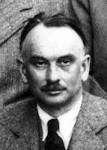
Richard Tolman |
Richard Tolman (astronomy) Richard Tolman shows that black-body radiation in an expanding universe cools but remains thermal. |
|
30 Nov 1933
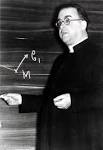
Georges Lemaître |
Georges Lemaître (astronomy) Georges Lemaître interprets the cosmological constant as due to a vacuum energy with an unusual perfect fluid equation of state. |
|
30 Nov 1933

Mulliken scale |
Mulliken scale (chemistry) The Mulliken scale of chemical element electronegativity is developed by Robert S. Mulliken. |
|
30 Nov 1933

Norman Haworth |
Norman Haworth (chemistry) Norman Haworth and Edmund Hirst report the first synthesis of vitamin C. |
|
30 Nov 1933
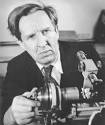
J. D. Bernal |
J. D. Bernal (chemistry) J. D. Bernal and Dorothy Crowfoot first successfully apply the technique of X-ray crystallography to analysis of a biological substance, pepsin. |
|
30 Nov 1933

heavy water |
heavy water (chemistry) The first commercial heavy water plant is built at Vemork in Norway; production also starts this year at Dnepropetrovsk in the Soviet Union. |
|
30 Nov 1933

Lewis Mumford |
Lewis Mumford (history of science) Lewis Mumford publishes Technics and Civilization. |
|
30 Nov 1933
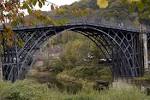
The Iron Bridge |
The Iron Bridge (history of science) The Iron Bridge in Shropshire, dating from the Industrial Revolution period, becomes an officially scheduled monument in England. |
|
30 Nov 1933
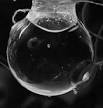
Sonoluminescence |
Sonoluminescence (physics) Sonoluminescence is discovered at the University of Cologne. |
|
30 Nov 1933

Gregory Breit |
Gregory Breit (physics) Gregory Breit and John A. Wheeler describe the Breit–Wheeler process. |
|
30 Nov 1933
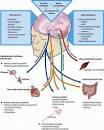
chronic fatigue syndrome |
chronic fatigue syndrome (physiology and medic) Outbreak of "atypical poliomyelitis", strongly resembling what would later be called chronic fatigue syndrome, affects a large number of medical staff at the Los Angeles County Hospital. |
|
30 Nov 1933
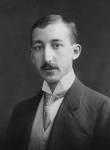
George de Hevesy |
George de Hevesy (physiology and medic) George de Hevesy uses heavy water in one of the first biological tracer experiments, to estimate the rate of turnover of water in the human body. |
|
30 Nov 1933
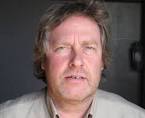
Tudor Thomas |
Tudor Thomas (physiology and medic) Tudor Thomas' work on corneal grafting restores the sight of a man who had been nearly blind for 27 years. |
|
30 Nov 1933

135 film |
135 film (technology) The 135 film cartridge is introduced in Germany and the United States with the Kodak Retina camera, making 35mm film easy to use. |
|
30 Nov 1933

television sets |
television sets (technology) The first commercial electronic television sets with cathode ray tubes are manufactured by Telefunken in Germany. |
|
30 Nov 1933

Bradford's law |
Bradford's law (publications) Samuel C. Bradford proposes Bradford's law of scattering, an example of Pareto distribution applicable in the bibliometrics of scientific literature and beyond. |
|
30 Nov 1933
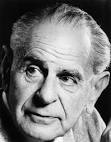
Karl Popper |
Karl Popper (publications) Karl Popper publishes Logik der Forschung. |
|
30 Nov 1933

Willie Hobbs Moore |
birth Willie Hobbs Moore Willie Hobbs Moore (died 1994), African American engineer. |
|
29 Jan 1934

Fritz Haber |
death Fritz Haber Fritz Haber (born 1868), German chemist. |
|
05 Feb 1934

William Morris Davis |
death William Morris Davis Died 5 Feb 1934 at age 83 (born 12 Feb 1850). American geomorphologist and geologist who developed, geomorphology as the scientific study of landforms. He is noted for his concept of the “cycle of erosion” (or geomorphic cycle) whereby mountains and other landforms have a pattern of creation, maturation and becoming old. Mountains are formed by uplift and have steep, irregular forms. With time, valleys are carved by streams, which widen, and erosion eventually produces gentler, rolling hills. Though this scheme is not accurate by today's understanding, Davis initiated new ideas to interpret the evolution of landforms. His essay The Rivers of Pennsylvania (1889) first gave a broad statement of his concepts. |
|
23 Feb 1934

Sophus Otto Müller |
death Sophus Otto Müller Died 23 Feb 1934 at age 87 (born 24 May 1846). Danish paleontologist who was prominent in the study of Bronze and Iron ages and Oriental influence on prehistoric Europe. In the late 1800s, he discovered and excavated burial mounds in central Jutland, Denmark, that represented the first evidence of the Neolithic battle-axe cultures of the later Middle Neolithic Periods in Scandinavia. He identified chronological sequences of the single graves within these barrows. The antiquities he recovered from them included well-proportioned battle-axes, flint axes, amber beads, beakers, and cups. |
|
05 Mar 1934

Daniel Kahneman |
birth Daniel Kahneman Daniel Kahneman, psychologist, Israeli-American winner of the Nobel Memorial Prize in Economic Sciences. |
|
08 Mar 1934

Sodium thiopental |
Sodium thiopental (physiology and medic) Sodium thiopental, the first intravenous anesthetic, synthesized by Ernest H. Volwiler with Donalee L. Tabern of Abbott Laboratories, is first administered to human subjects. |
|
09 Mar 1934
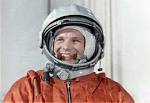
Yuri Gagarin |
birth Yuri Gagarin Yuri Gagarin (died 1968), Russian cosmonaut, the first man in space. |
|
31 Mar 1934

Carlo Rubbia |
birth Carlo Rubbia Carlo Rubbia, Italian winner of the Nobel Prize in Physics. |
|
03 Apr 1934
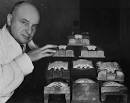
Percy Shaw |
Percy Shaw (technology) Percy Shaw patents the cat's eye road-safety device in Britain. |
|
03 Apr 1934
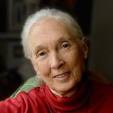
Jane Goodall |
birth Jane Goodall Jane Goodall, English primatologist. |
|
09 Apr 1934

Oskar von Miller |
death Oskar von Miller Died 9 Apr 1934 at age 78 (born 7 May 1855). German electrical engineer who fostered the electric-power industry in Germany and founded the Deutsches Museum of science and technology in Munich. He made fundamental initial experiments on long-distance energy transmission such as (in 1882) over 57 km from Miesbach to Munich with 1400 volts direct current. In 1891, he organized a 20,000-volt power transmission line over 175 km from Lauffen to Frankfurt, an important advance in the transmission of alternating current. From 1918-24, he was project manager building the power station on Lake Walchen, at that time the largest hydroelectric power station in the world. With an average of 300 million kWh a year, the Lake Walchen power plant is still one of Germany's largest peak load power stations. |
|
18 Apr 1934

Citroën Traction Avant |
Citroën Traction Avant (technology) Citroën Traction Avant introduced, the world's first front-wheel drive monocoque (welded steel unit body) production automobile, designed by André Lefèbvre and Flaminio Bertoni. |
|
21 Apr 1934
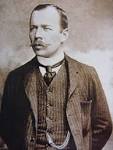
Carsten Borchgrevink |
death Carsten Borchgrevink Carsten Borchgrevink (born 1864), Norwegian Antarctic explorer. |
|
24 Apr 1934
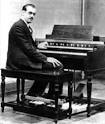
Laurens Hammond |
Laurens Hammond (technology) Laurens Hammond patents the Hammond organ in the United States. |
|
30 Apr 1934

William Henry Welch |
death William Henry Welch Died 30 Apr 1934 at age 84 (born 8 Apr 1850). American pathologist who played a major role in the introduction of modern medical practice to the U.S. As the first dean of the medical school at Johns Hopkins University (1893-98), Welch revolutionized American medicine by demanding of its students a rigorous study of physical sciences and an active involvement in clinical duties and laboratory work. His students included Walter Reed, James Carroll and Simon Flexner. As an original investigator, With Flexner, he demonstrated (1891-92) the pathological effects produced by diphtheria toxin. In 1892, he discovered Micrococcus albus and its relation to wound fever and of Clostridium welchii (Welch's bacillus), the causative agent of gas gangrene. |
|
23 May 1934

Robert Moog |
birth Robert Moog Robert Moog (died 2005), American pioneer of electronic music. |
|
04 Jul 1934
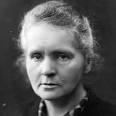
Marie Curie |
death Marie Curie Marie Curie (born 1867), Polish-born French physicist. |
|
13 Jul 1934

Fritz Graebner |
death Fritz Graebner Died 13 Jul 1934 at age 57 (born 4 Mar 1877). Robert Fritz Graebner was a German ethnologist who advanced the theory of the Kulturkreise, or culture complex, which postulated diffusions of primitive culture spheres derived from a single archaic type. His scheme launched the culture-historical school of ethnology in Europe and stimulated much field research. |
|
15 Aug 1934
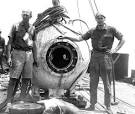
Bathysphere record dive |
Bathysphere record dive In 1934, after a series of earlier dives since Jun 1930, each progressively deeper, American zoologist William Beebe and Otis Barton made their pioneering, record-breaking ocean descent of 3,028 feet in a bathysphere designed by Barton. In that instance, the bathysphere withstood over 1,360 pounds of pressure. Beebe began exploring the undersea world with his homemade diving helmet on 9 Apr 1925. William Beebe dreamed of exploring the deeper locations where he and his air hose tether could not reach. Barton read of Beebe's plans in the 1926 Thanksgiving Day edition of the New York Times. Barton had already decided to design a deep sea vessel, had an engineering background, and a substantial inheritance. The two joined forces on 28 Dec 1928. |
|
27 Sep 1934

Ellen Willmott |
death Ellen Willmott Ellen Willmott (born 1858), English horticulturist. |
|
14 Oct 1934

Robert McCorkle Netting |
birth Robert McCorkle Netting Born 14 Oct 1934; died 4 Feb 1995 at age 60. U.S. anthropologist who established cultural ecology as a scientific discipline. Netting earned international recognition in the field of cultural ecology for documenting the strategies used by residents of challenging habitats to survive. He covered this area extensively. Netting was involved with and studied human-environment interactions, focusing on subsistence and development issues. He was as loyal to geography as he was to anthropology. Netting filled the gap between geography and anthropology better than anyone else, especially from the anthropological side. |
|
17 Oct 1934

Santiago Ramón y Cajal |
death Santiago Ramón y Cajal Santiago Ramón y Cajal (born 1852), Spanish winner of the Nobel Prize in Physiology or Medicine. |
|
09 Nov 1934
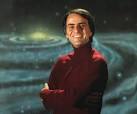
Carl Sagan |
birth Carl Sagan Carl Sagan (died 1996), American astronomer. |
|
16 Nov 1934

Carl von Linde |
death Carl von Linde Died 16 Nov 1934 at age 92 (born 11 Jun 1842). German chemist, engineer and inventor who invented mechanical refrigeration. His first refrigeration equipment was tested in a Munich brewery. Brewing good lager beer required low temperatures, limiting brewing to winter, or in deep cellars with the use of large quantities of block ice. Through Linde's invention of refrigeration, beer brewing became seasonally independent. Linde also invented a continuous process of liquefying gases in large quantities which provided both impetus and means for conducting scientific research at low temperatures and very high vacuums. Linde's original industry has now grown to 120 companies around the world. |
|
20 Nov 1934

Willem de Sitter |
death Willem de Sitter Died 20 Nov 1934 at age 62 (born 6 May 1872). Dutch mathematician, astronomer, and cosmologist who developed theoretical models of the universe based on Albert Einstein's general theory of relativity. He worked extensively on the motions of the satellites of Jupiter, determining their masses and orbits from decades of observations. He redetermined the fundamental constants of astronomy and determined the variation of the rotation of the earth. He also performed statistical studies of the distribution and motions of stars, but today he is best known for his contributions to cosmology. His 1917 solution to Albert Einstein's field equations showed that a near-empty universe would expand. Later, he and Einstein found an expanding universe solution without space curvature. |